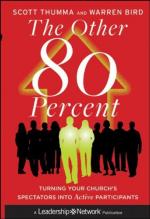I at first divided the Pleasures of the Imagination, into such as arise from Objects that are actually before our Eyes, or that once entered in at our Eyes, and are afterwards called up into the Mind either barely by its own Operations, or on occasion of something without us, as Statues, or Descriptions. We have already considered the first Division, and shall therefore enter on the other, which for Distinction sake, I have called the Secondary Pleasures of the Imagination. When I say the Ideas we receive from Statues, Descriptions, or such like Occasions, are the same that were once actually in our View, it must not be understood that we had once see the very Place, Action, or Person which are carved or described. It is sufficient, that we have seen Places, Persons, or Actions, in general, which bear a Resemblance, or at least some remote Analogy with what we find represented. Since it is in the Power of the Imagination, when it is once Stocked with particular Ideas, to enlarge, compound, and vary them at her own Pleasure.
Among the different Kinds of Representation, Statuary is the most natural, and shews us something likest the Object that is represented. To make use of a common Instance, let one who is born Blind take an Image in his Hands, and trace out with his Fingers the different Furrows and Impressions of the Chissel, and he will easily conceive how the Shape of a Man, or Beast, may be represented by it; but should he draw his Hand over a Picture, where all is smooth and uniform, he would never be able to imagine how the several Prominencies and Depressions of a human Body could be shewn on a plain Piece of Canvas, that has in it no Unevenness or Irregularity. Description runs yet further from the Things it represents than Painting; for a Picture bears a real Resemblance to its Original, which Letters and Syllables are wholly void of. Colours speak of Languages, but Words are understood only by such a People or Nation. For this Reason, tho’ Men’s Necessities quickly put them on finding out Speech, Writing is probably of a later invention than Painting; particularly we are told, that in America when the Spaniards first arrived there Expresses were sent to the Emperor of Mexico in Paint, and the News of his Country delineated by the Strokes of a Pencil, which was a more natural Way than that of Writing, tho’ at the same time much more imperfect, because it is impossible to draw the little Connexions of Speech, or to give the Picture of a Conjunction or an Adverb. It would be yet more strange, to represent visible Objects by Sounds that have no Ideas annexed to them, and to make something like Description in Musick. Yet it is certain, there may be confused, imperfect Notions of this Nature raised in the Imagination by an Artificial Composition of Notes; and we find that great Masters in the Art are able, sometimes, to set their Hearers in the Heat and Hurry of a Battel, to overcast their Minds with melancholy Scenes and Apprehensions of Deaths and Funerals, or to lull them into pleasing Dreams of Groves and Elisiums.




